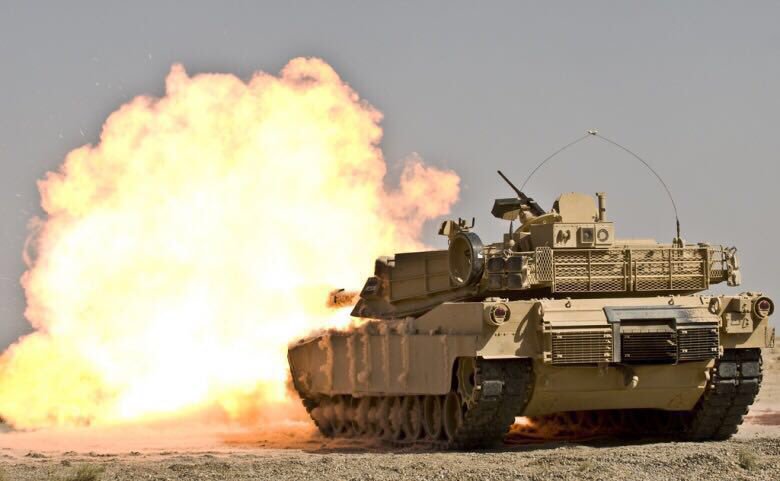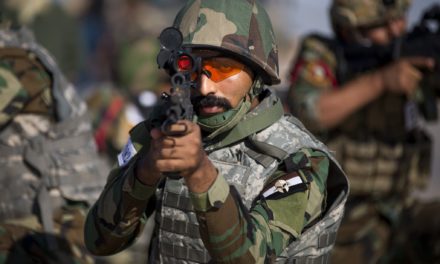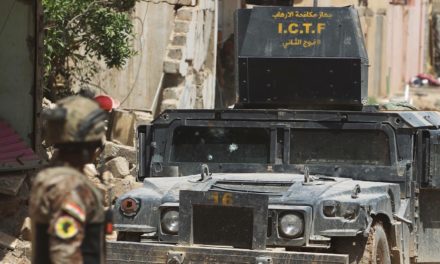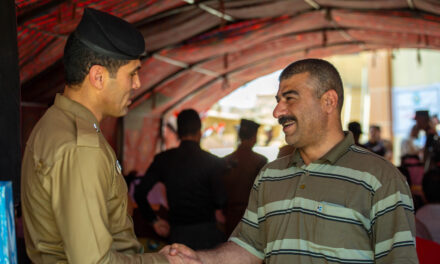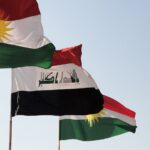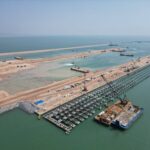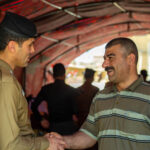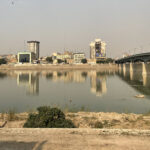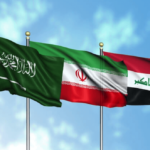The war against Da’ish (aka ISIS/ISIL or the “Islamic State”) in Iraq is a battle for survival. For Iraq, it’s a battle for the country’s future, a battle against a force that threatens to tear the fragile country into pieces. For Da’ish, it’s a battle for the survival of the core of the caliphate, the place where it all began over a decade ago. This piece will take you on a tour of the battles raging across multiple provinces in Iraq.
Baghdad
Baghdad has seen better days but the beleaguered capital of Iraq today finds itself seeing relative stability that is periodically interrupted by large-scale horrific attacks like the recent bombings in Sadr City which claimed more than 70 lives and wounded more than 100. Daily bombings go unreported the city due to their small size. These are usually small IEDs that kill between 1 and 3 people. The city witnesses at least 3 of these small IEDs blasts a day. Gun attacks are also a daily occurrence in the capital city, however many of these gun attacks are crime-related.
Massive protests led by Muqtada Al-Sadr and his followers are currently taking place outside the Green Zone in central Baghdad that houses many important governmental buildings and embassies. These anti-corruption/pro-reform protests and the current sit-in have put a lot of pressure on Iraqi security forces but they’ve handled the situation very well. Both protestors and Al-Sadr have thanked security forces for protecting the demonstrations. No terror attacks targeting the protestors have occurred so far.
Weekly anti-terror raids take place in Baghdad and its peripheries as security and intelligence forces tackle the Da’ish presence in the Iraqi capital. A main hub for Da’ish is a cluster of districts and towns south of Baghdad (Dora, Arab Jubour, Latifiyah, Yusufiyah, Mahmoudiyah etc.). Iraq watchers will readily identify this region as the infamous “Triangle of Death”. The recapture of Jurf Al-Sakhar (renamed Jurf Al-Nasr) in October 2014 allowed Baghdad to breathe a sigh of relief. This was the beating heart of Da’ish’s Wilayat Al-Janoub (Southern Province) and it was ripped out by a very successful operation led by the Hashd Al-Sha’abi (aka PMUs). Ever since, the flow of car bombs and IEDs into Baghdad hasn’t quite been the same. Security raids in Baghdad’s northern (Tarmiyah, Taji etc.) and southern peripheries aren’t out of the ordinary.
Major scoops for Iraqi security forces are commonplace along the Da’ish supply line coming in from Anbar via Nukhayb and then Karbala towards Baghdad. A convoy of car bombs was seized in Karbala in June 2015. And only this week, a truck being driven by an elderly Da’ish collaborator was seized with a large number of IEDs, anti-tank mines, suicide vests, rockets and dozens of sacks full of explosive material (ammonium nitrate and C4). The truck was heading for Baghdad. However, it’s obvious that security forces must significantly increase operations to further reduce attacks. Replacing fake bomb detectors with something more useful is a start. Yes, they’re still using them.
The attack on Abu Ghraib on the 28th of February came as a not-so-shocking surprise. An early dawn raid by dozens of militants (many of them wearing suicide vests) came from the Fallujah region. Spearheaded by car bombs, the attackers stormed through checkpoints, struck an army base with artillery, and took over multiple areas in the outskirts of Abu Ghraib district, including a grain silo. Iraqi army units quickly mobilized and stormed these areas and were reinforced within a couple of hours by more army and Hashd troops. A source in the Ministry of Defence confirmed to me that the attack resulted in around 23 Iraqi fatalities and 48 Da’ish dead.
As Da’ish feels more and more pressure across the country, such attacks on Abu Ghraib and other areas in Baghdad’s peripheries (Taji) will likely become more frequent to try and divert resources and manpower back to the capital.
Baghdad Operations Command unveiled plans earlier in the year regarding a set of walls and trenches that would fortify the city’s northern, western and southern belts against the enemy. The plan was met with political resistance from Sunni factions who claimed that the project was designed to separate Baghdad from nearby Sunni regions but those protests seem to have subsided for now. However, part of the project would mean many checkpoints inside the city would be lifted. This might not be a bright idea as Da’ish sleeper cells inside the city could take full advantage of relaxed security measures.
Anbar
Since the onset of the latest period of violence in Iraq (early January 2014), the volatile Anbar province has been at the epicentre of the war on Da’ish with multiple frontlines across Iraq’s biggest province.
Iraqi forces recently conducted several successful operations focused on the Baghdad-Anbar provincial border region that houses historical strongholds for Da’ish and its ancestors (Al-Qaeda in Iraq and the “Islamic” State of Iraq). Fighting in this area focuses on a group of villages (Al-Subayhat, Al-Abadi, Al-Rashad) that lie west of the infamous Abu Ghraib-Zowbaa-Zaydan area. The amount of Da’ish collaborators and sleeper cells in this region is high and will pose a challenge for security forces trying to protect Baghdad for years to come.
Trouble in Anbar then stretches west to Fallujah and the district of Karma. This area has been out of Iraqi control for around 2 years (some would say that like Mosul, this region has never really been under Baghdad’s control). Multiple offensives to recapture Karma (which lies northeast of Fallujah) have ended in failure due to the presence of civilians and (the real reason) an unfathomable amount of IEDs, buildings rigged with explosives and car bomb waves lying in wait. It has been (understandably) slow work but most of the district is now under Iraqi control apart from the city’s centre. Political pressure has been the reason given by some local Hashd commanders as to why operations to retake Karma seem to be abruptly paused as they begin to pick up pace. However, no elaborations as to where these political pressures are coming from (and why) have been given.
The noose is now firmly fastened around Fallujah’s neck. Karma is largely cut off. Iraqi forces hold Al-Sijar, Nadhim Al-Taqsim, Albu Shijil and Saqlawiyah to the north and northwest. Da’ish is busy to the east (towards Baghdad) and the west (towards Ramadi). Meanwhile, Iraqi forces have routed Da’ish in multiple villages and towns south of Fallujah as they advanced in the corridor between the city and Amiriyat Al-Fallujah (recapturing the villages of Albu Du’aij, Albu Manahi, Albu Hathal) and a strategic victory in Al-Nu’aimiyah.
While reports of tribal uprisings inside Fallujah have been highly over-exaggerated, it could be a telling sign of what’s yet to come. As Iraqi forces enter the city, we could very well see tribes taking the Iraqis’ side over Da’ish. However, the city’s leanings towards extremism (and extremists) could mean such an uprising will either be small or short-lived.
Recent reports indicate that it will take at least 6 months for Ramadi to be completely cleared of IEDs, house-borne IEDs and war debris. The city is experiencing relative calm for the first time in over 2 years. After recapturing the city, Iraqi forces successfully pushed east towards Al-Sofiyah, Al-Sijariyah, Juwaybah and Husaybah Al-Sharqiyah. These areas had not only been fortified bases for Da’ish but areas that militants fled to from Ramadi’s centre. They took families as hostages, knowing that Iraqi and coalition aircraft would avoid hitting them. At the time of the operation, an Iraqi military official I spoke to told me about footage from reconnaissance drones that had been passed to him showing groups of Da’ish militants moving through Husaybah with civilians sitting on top of their vehicles (as human shields) and Da’ish patrols that had forced groups of elderly civilians to walk in front of and behind them so that aircraft wouldn’t target them.
A recent Iraqi operation in the villages of Zankourah and Asriyah was also met with resistance from Da’ish militants who had fled Ramadi’s centre and based themselves in these villages northwest of Anbar’s provincial capital. Iraqi tank units and coalition airstrikes annihilated dozens of militants and around 10,000 civilians reportedly fled (then returned to) the villages.
The push eastward from Ramadi continues with operations focusing on a series of villages northeast of the city, namely Al-Hamidhiyah (retaken a few weeks ago), Albu Bali and Albu Obaid. These are mainly agricultural areas that house Da’ish hideouts, headquarters and IED/car bomb workshops. Another operation was launched last week to recapture the sprawling Jazirat Khalidiyah area east of Ramadi. These areas form a significant portion of the Ramadi-Fallujah corridor and clamping down on Da’ish in this region will cut a lot of vital supply lines in the area. These were some of the first areas Da’ish attacked early in January 2014, as they attempted to consolidate territory leading into Ramadi.
Iraqi counter-terrorism forces over the last week or so began to move up the Euphrates River from western Ramadi towards Hit district. They quickly scored several victories against Da’ish in the village of Albu Tayban, Akbah, Dowar and the district of Al-Mohammadi which is only a few kilometres outside Hit. Armoured units moved to the outskirts of Hit and Iraqi forces liberated the nearby district of Kubaysah this weekend. Da’ish have released images of car bomb waves being launched at Iraqi troops near Kubaysah but the Iraqi army’s 7th Division said early Sunday that they had destroyed several VBIEDs in that very same region.
The situation in Haditha and Al-Baghdadi is dormant. For now, Da’ish seems to have learned a lesson after their massive offensive in January failed with more than 200 casualties on their end and relatively low casualties on the Iraqi side after a solid intervention by coalition aircraft. The recent advance in Jazirat Samarra looked like it might stretch all the way to western Iraq, opening new supply lines into Haditha but the push was abandoned due to the lack of resources/manpower available to hold such a vast area (the Baiji-Haditha road alone is roughly 150km long).
Security lapses still occur near Haditha. A unit of suicide bombers were able to reach the entrance of an Iraqi base near Haditha dam on the 1st of March, disguised as soldiers, and began to engage troops. Upon hearing the clashes, Iraqi officers decided to rush towards the gunfire to help out their men. The suicide bombers detonated their vests, martyring 6 Iraqis including Staff Brig. Gen. Ali Aboud and Lt. Col. Farhan Ibrahim.
On the 13th of March, news emerged from Rutbah (150km from the Iraq-Jordan border) that a full Da’ish withdrawal had taken place. This news was puzzling and several ideas floated about including shortages in manpower. However, the situation seems unchanged and the city seems to still be under Da’ish control.
Ninawa (Nineveh)
It’s quiet on the northern front (at least for now). Baghdad is steadily sending Iraqi army units north to bases in Makhmur, about 70km southeast of Mosul. There have been several outbursts of violence recently with Da’ish militants using mortars and rockets to bomb the Iraqi bases from nearby villages. Such an attack a couple of weeks ago resulted in Iraqi casualties and a similar attack this weekend led to the death of at least 1 US marine (Staff Sgt. Louis F. Cardin) and the wounding of 3 others. The earlier attack on Iraqis resulted in 24 hours of hell for the militants in nearby villages as Iraq’s army responded with heavy artillery and Saturday’s attack will likely result in a heavy response by the US-led coalition. Da’ish released dramatic footage of massive airstrikes (reportedly carried out by US-led coalition aircraft) in Mosul on Sunday.
The marine’s death forced the Pentagon to acknowledge a firebase that US forces apparently had only set-up a few days earlier. On Sunday, it emerged that a detachment from the 26th Marine Expeditionary Unit (MEU) has joined US forces already in Iraq. Cardin was part of the 26th MEU’s 2nd Battalion.
US military intelligence recently identified the corridor between Tal ‘Afar and Mosul as the “thickest stronghold” for the terrorist organization in Iraq, which is hardly a surprise when you take the strategic/logistical importance of the area and couple it with the strong base of support Da’ish and its predecessors enjoyed in that region over the last decade. A mix of heavy firepower (airstrikes and artillery) and special forces raids will likely be used to target that stretch of territory and others like it in and around Mosul. Using American commandos alongside Iraqi troops hasn’t been ruled out, even though it would face huge resistance from Iraqi politicians and people alike.
When we see the Iraqi army moving towards Al-Qayyarah, we’ll know the operation to take Mosul has begun.
Salahuddin
One of the most important, successful and under-reported operations in the war on Da’ish was launched earlier this month (1st March) and carried out by a large force of thousands of Iraqi army, Federal Police, counter-terrorism forces and Hashd fighters. The aim of this operation was to liberate and hold the sprawling Jazirat Samarra and Lake Tharthar regions in central Iraq. The vast mixed desert/agricultural area has been a stronghold of terror since the Al-Qaeda in Iraq days. The area housed training bases, arms depots, explosives factories, headquarters and hideouts for terrorists. The massive contingent of Iraqi forces charged through the vast territory (roughly half the size of Lebanon), killing in excess of 200 Da’ish militants. Thousands of families (many of them displaced from other war-torn regions of Iraq) gave the advancing Iraqi forces a heroes’ welcome. The operations ended within a week, marking a great victory that resulted in the recapture of areas out of Iraqi control for over a decade.
After the recapture of Baiji, Iraq’s forces advanced north to the Makhoul mountains to secure the area in anticipation of it being used to attack the nearby Baiji refinery and thermal plant. Iraqi forces (mainly comprised of units from different Hashd groups) met heavy resistance in the shape of daily car bomb waves, snipers, mortar/artillery attacks and small groups of inghimasi (suicide) militants. Since then (October), Iraqi troops have entrenched themselves along the mountain peaks and across multiple roads and positions in the region. Da’ish militants launch almost daily attacks against these positions in the hopes of winning a war of attrition and thwarting any advances towards the district of Shirqat. These attacks usually end in casualties and retreat for the militants due to the Iraqis’ fortified positions and air support from Iraqi aircraft.
All territorial gains for the Iraqis from this point forward is territory that has been out of government control since the Da’ish surge through northern Iraq in summer 2014. Iraqi forces are also on the outskirts of Al-Fathah (pronounced Fat-ha), which is mainly used to pump fighters and car bombs into Salahuddin from Mosul and nearby Hawijah. That operation could be launched any day now.
An important target for Da’ish is the Alas and Ajil oilfields in eastern Salahuddin province. The militants see these oilfields as a lucrative source of income and have been attacking the area at least once or twice a week for more than 6 months. Iraqi forces have fortified their positions in and around the oilfields and have successfully repelled hundreds of attacks. The latest attack occurred this morning as a group of around 30 militants attacked positions held by joint forces (army, federal police, Hashd) and ended in 15 Da’ish militants being killed and 8 others wounded (source: Alsumaria).
Kirkuk
It is taking Iraq’s government a frustratingly long time to order the liberation of southwestern Kirkuk province. This region holds a cluster of strategic bastions for Da’ish, namely the villages of Al-Zab, Al-Riyadh, Al-Rashad and Al-Abbasi with the district/city of Hawijah as the head of the snake. The Shi’a Turkmen minority has been pleading with the government for months to liberate the town of Bashir which has been under Da’ish control for around 2 years.
Bashir has been used over the last few weeks to launch chemical weapons into the town of Taza, 6km east of Bashir and 20km south of Kirkuk city. The chemical attacks climaxed on the 8th of March when more than 40 rockets filled with chlorine and mustard gas struck the town. Several fatalities have been suffered since, mainly children, and thousands of civilians have reportedly experienced symptoms such as blistering skin, burns and respiratory difficulties.
Ethno-sectarian tensions and political disagreements over disputed land could be one of the reasons why operations in southwestern Kirkuk are being delayed. Last November witnessed heavy clashes between Kurds and Turkmen in nearby Tuz Khurmato. Kirkuk province is home to a variety of races and religions and such conflicts aren’t new and will not subside any time soon. The Hashd’s leadership consistently voice their readiness to begin operations in Kirkuk and one of the biggest Hashd commanders, Badr’s Hadi Al-‘Amiri, held talks with Kirkuk’s governor last week.
Diyala
Diyala province is beautiful, tense and unstable. Bombings targeting Shi’a Muslims in this province have been relentless and always seem to be catastrophically large. A recent suicide bombing inside a funeral tent in the turbulent district of Muqdadiyah took more than 40 lives (the day after the aforementioned Sadr City bombings).
After a double blast back in January (also in Muqdadiyah, which lies northeast of the provincial capital Ba’qubah) that killed at least 23 civilians and Hashd fighters, all hell broke loose. Mosques and businesses belonging to Sunnis were attacked with local Sunnis blaming rogue Shi’a paramilitary fighters seeking revenge and other locals laying the blame at the feet of Da’ish, accusing them of trying to instigate sectarian trouble.
Recently, the situation in Diyala has calmed down. Security forces have launched multiple anti-terror raids, targeting Da’ish sleeper cells and a campaign to take illegally-owned firearms off the streets has begun. Religious, military and community leaders in the district have begun the healing process after recent events but the situation is still tense.
A large-scale offensive has kicked off this week east of Ba’qubah to tackle sleeper cells near the city. Several arrests have occurred and multiple hideouts and IED workshops raided.
The battle for the Himreen (Hamrin) mountainous range still hasn’t met a decisive end. The mountain ridge stretches from Diyala into Salahuddin and Kirkuk provinces and is one of the most strategically vital and dangerous regions in Iraq. Both sides covet such an important position that lies in the middle of 3 important provinces. The situation seems to currently be at a stalemate but Iraqi forces must secure this region to stem the flow of Da’ish militants from northern Iraq into Salahuddin and Diyala.
Conclusion
As you can see, there are multiple kinetic frontlines in Iraq right now that seem to be getting next to no coverage from western news outlets. This is particularly infuriating as journalists seem to only wake up out of their slumber when Da’ish takes a town, sometimes even neglecting to report its recapture after they lustily cover its fall. This is a real shame because Iraqi forces are doing extraordinary work as they fight to dislodge a global terror group from its main hubs on behalf of the world.
As for the war itself, the US-led coalition must train more Iraqi JTACs (joint terminal attack controllers) to call in strikes and relax their rules of engagement. Iraqi troops who are able to receive coalition air support complain of reluctance to strike and long delays. The US should either step up strikes or accelerate the training/transfer of F-16IQ jets to the Iraqi air force so that they can provide air support.
Sometime soon, preferably after the liberation of Hit, Shirqat, and Karma, Iraqi leadership must pause military operations and take steps to consolidate supply lines and fortify frontlines. Troops need to be given some time to reorganise themselves and replenish stocks and supplies before the biggest operations of this campaign: Hawijah, Fallujah, Mosul and the border with Syria.

Haidar Sumeri
Haidar Sumeri is a Middle East observer, mainly focusing on Iraq’s war on terrorism.

